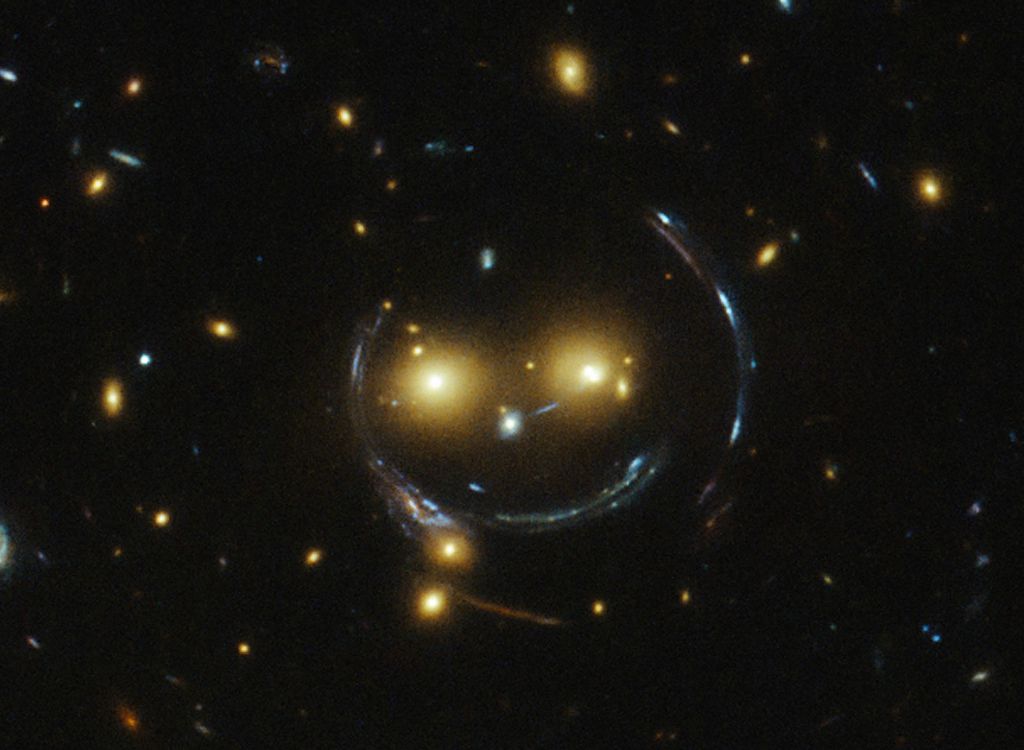

We’ve seen many beautiful galaxies with strange, almost-familiar qualities, including colliding galaxies that are shaped like a heart. Seeing familiar shapes and patterns in random data isn’t a new thing — it even has a name: pareidolia.
In a new image taken by the Hubble Space Telescope, we come across a galaxy cluster with what looks to be a big grin plastered across its ‘face;’ called SDSS J1038+4849, it’s a member of the J1038 cluster, and can be found approximately 4.5 billion light-years from Earth in the Ursa Major constellation.
The only reason these distant galaxies are clear is because they are being affected by a phenomenon called gravitational lensing, whereby the immense mass of a galaxy cluster warps the fabric of spacetime to such a high degree, its gravity turns it into a cosmic magnification lens. Specifically, when light encounters one of these lenses, it is bent and distorted; consequently, background objects appear much larger than they otherwise would.
In this special case of gravitational lensing, a ring — known as an Einstein Ring — is produced from this bending of light, a consequence of the exact and symmetrical alignment of the source, lens and observer and resulting in the ring-like structure we see here.
Hubble has provided astronomers with the tools to probe these massive galaxies and model their lensing effects, allowing us to peer further into the early Universe than ever before. This object was studied by Hubble’s Wide Field and Planetary Camera 2 (WFPC2) and Wide Field Camera 3 (WFC3) as part of a survey of strong lenses.
[From NASA/ESA]
NASA also notes that this is merely one version of SDSS J1038+4849 that was entered into the Hubble’s Hidden Treasures contest. Post processing was carried out by the renowned Judy Schmidt. (See a larger image here.)